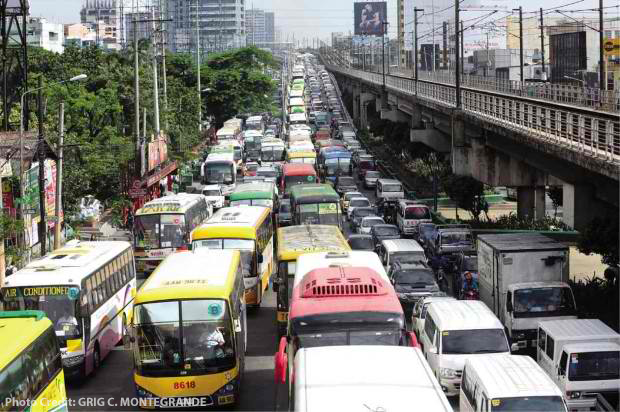The truth about Metro Manila traffic
The truth about traffic congestion in Metro Manila is that each of us, whether motorist, passenger, pedestrian, or traffic enforcer, are either contributing to the problem or taking part in the solution.
There are factors beyond our control like the 2.5 million vehicles registered in Metro Manila and our daytime road population reaching 14 million.
We must also expect the number of vehicles to increase in the next years together with the number of infrastructure projects in Metro Manila that are necessary to keep up with the country’s growth and development.
But when it comes to certain choke points and problem areas along our main thoroughfares, we can agree that heavy traffic can be avoided with discipline, obedience, and road courtesy.
It need not be as bad as it is – and we’re seeing evidence to support this.
Since the intervention of the government’s task force on traffic, there are good indications that we can improve the traffic situation.
In the hopes of mimicking the success of Manila’s port decongestion last year, we filed a Senate Resolution seeking to formulate strategies and solutions to address the worsening traffic conditions and called for public hearings, which serve as a venue for stakeholders to work together and implement solutions.
We are hoping that the hearings at the Senate can help smoothen the alliance among the various agencies and apply the necessary political pressure while involving the public in finding solutions to this issue.
The unified objective is to fortify effective traffic decongestion strategies by the time we host the Asia Pacific Economic Cooperation (APEC) and experience the rush of the Christmas season.
Though it may be premature to proclaim success, the results from the first weeks are encouraging.
The task force on traffic has already implemented initiatives and interventions to ease our traffic situation.
We witnessed the Highway Patrol Group (HPG) take the reins to strictly enforce existing traffic rules equally among motorists and public transport vehicles, even penalizing fellow policemen caught breaking the law.
The HPG will now supervise personnel from the Metropolitan Manila Development Authority (MMDA) as they pass on operational control.
When it comes to the buses along EDSA, government agencies are keeping a watchful eye on their traffic flow to make changes on locations of loading bays, if necessary.
Illegal vendors and illegally parked vehicles have also been removed with the help of the local government units so they do not impede the flow of traffic.
Seeing various agencies of government working together fluidly to pursue a common objective is heartening and we are interested to see the implementation of other planned interventions, such as the truck ban, staggered work hours, special Christmas lanes, and APEC VIP lanes.
The next issue to solve is the very real problem of conveniently moving people en masse and not just improving the movement of private cars.
To improve our road efficiency, we must attract more Filipinos to take mass transport like buses and trains. Carpooling is another intervention that can contribute to the decongestion of our roads and this can be incentivized with the creation of special lanes for high-occupancy vehicles.
As we work through the “-ber” months, we can expect the task force to implement these interventions across the metro and maintain strict enforcement of traffic rules.
But it will take the collective effort of the government, private sector, and general public to generate lasting, sustainable solutions.
The truth about Metro Manila’s traffic problem is that we need the participation of motorists, commuters, and public transport groups, along with our enforcement agencies to form a considerate, law-abiding culture that will benefit everyone in the long run.
Can we rebuild the trust between traffic enforcers, motorists, and the commuting public? Can each of us do our part by becoming responsible, courteous Filipinos, particularly during our daily commute?
Instead of being part of the problem, can we, instead, be part of the solution to Metro Manila’s traffic woes?
First Published on Manila Bulletin


Recent Comments